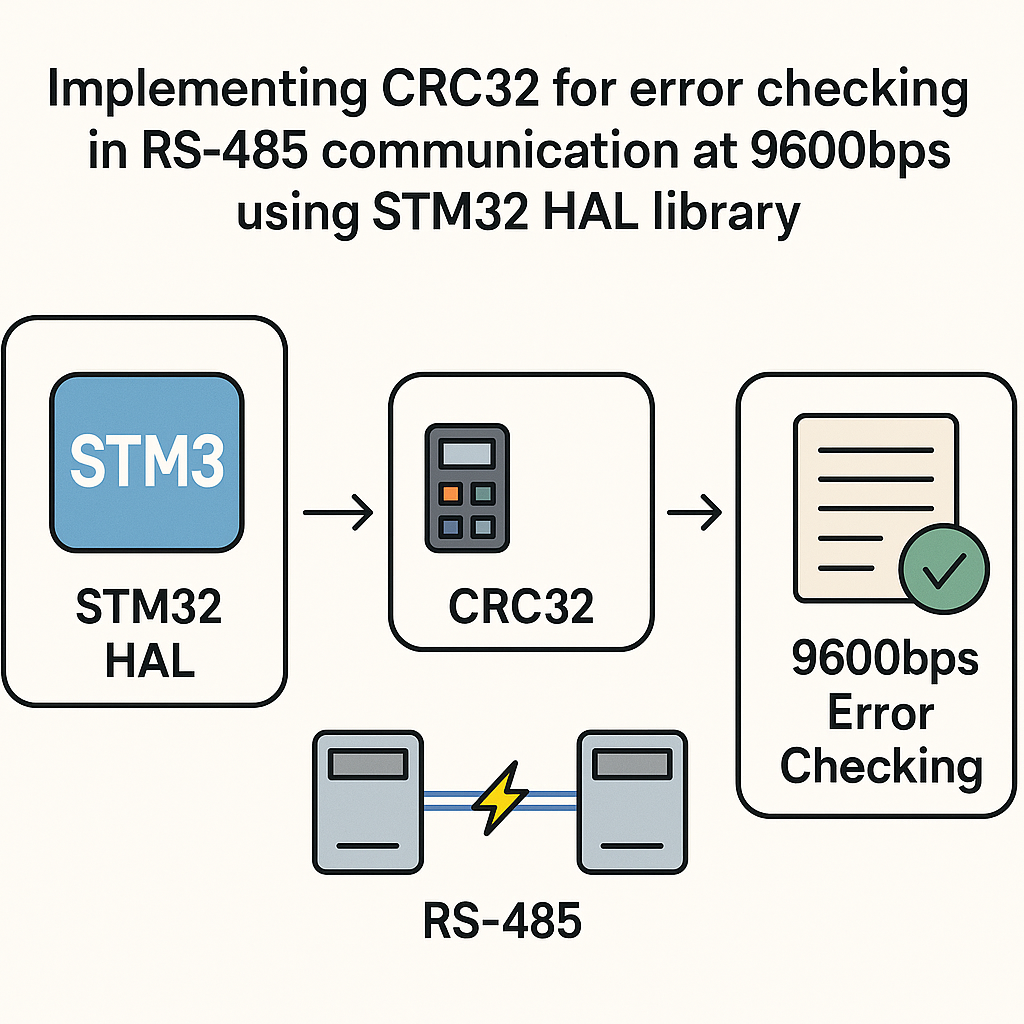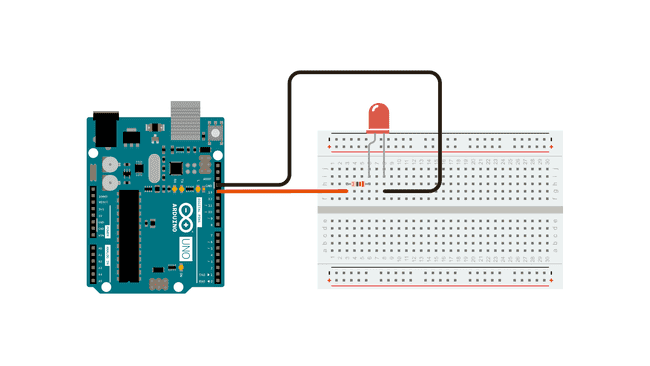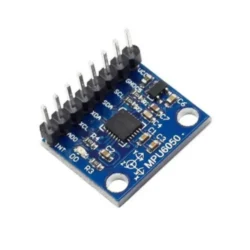Implementing CRC32 for Error Checking in RS-485 Communication at 9600bps Using STM32 HAL Library
In this tutorial, we will implement CRC32 error checking for RS-485 communication at 9600bps using the STM32 HAL library. This will enhance the reliability of data transmission over RS-485 by ensuring that errors can be detected in received data.
Prerequisites
- Basic knowledge of C programming.
- Familiarity with STM32 microcontrollers and the STM32 HAL library.
- RS-485 communication setup (hardware connections).
- Development environment set up (e.g., STM32CubeIDE).
Parts/Tools
- STM32 Microcontroller Board
- RS-485 Transceiver Module
- USB to RS-485 Converter (for PC connection)
- STM32CubeIDE or any compatible IDE
Steps
- Set Up Your Development Environment
- Install STM32CubeIDE.
- Set up a new STM32 project.
- Enable UART for RS-485 communication in the configuration.
- Implementing CRC32 Function
We need to implement the CRC32 function that calculates the checksum for our data.
unsigned long crc32(unsigned char *data, unsigned int length) { unsigned long crc = 0xFFFFFFFF; for (unsigned int i = 0; i < length; i++) { crc ^= data[i]; for (int j = 0; j > 1) ^ 0xEDB88320; } else { crc >>= 1; } } } return ~crc; } - Sending Data with CRC32
To send data, we first calculate the CRC32 and append it to the message.
void sendData(UART_HandleTypeDef *huart, unsigned char *data, unsigned int length) { unsigned long crc = crc32(data, length); // Append CRC to the data unsigned char crcBytes[4]; crcBytes[0] = (crc >> 24) & 0xFF; crcBytes[1] = (crc >> 16) & 0xFF; crcBytes[2] = (crc >> 8) & 0xFF; crcBytes[3] = crc & 0xFF; HAL_UART_Transmit(huart, data, length, HAL_MAX_DELAY); HAL_UART_Transmit(huart, crcBytes, 4, HAL_MAX_DELAY); } - Receiving Data and Validating CRC32
When receiving data, we need to check if the CRC32 matches the received data.
int receiveData(UART_HandleTypeDef *huart, unsigned char *buffer, unsigned int maxLength) { // Receive data (length + CRC) HAL_UART_Receive(huart, buffer, maxLength + 4, HAL_MAX_DELAY); unsigned long receivedCrc = (buffer[maxLength] << 24) | (buffer[maxLength + 1] << 16) | (buffer[maxLength + 2] << 8) | buffer[maxLength + 3]; unsigned long calculatedCrc = crc32(buffer, maxLength); return (calculatedCrc == receivedCrc); } - Testing the Implementation
Connect your hardware and test the communication using a terminal program.
- Send data from PC to STM32 via RS-485.
- Check if the STM32 successfully receives and validates the data.
Troubleshooting
- Data not received properly: Check your UART settings (baud rate, parity, stop bits).
- CRC mismatch: Ensure that the same CRC implementation is used on both sending and receiving ends.
- Check connections: Verify your RS-485 wiring and ensure that the transceiver is functioning correctly.
Conclusion
Implementing CRC32 for error checking in RS-485 communication significantly enhances data integrity. By following this tutorial, you can ensure that the data transmitted and received has minimal errors, making your communication reliable. Test thoroughly and adapt the code as necessary to fit your specific application needs.



